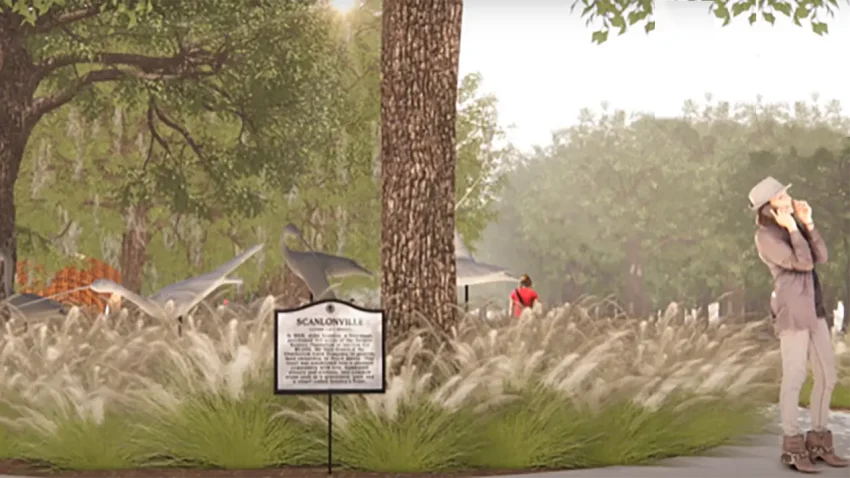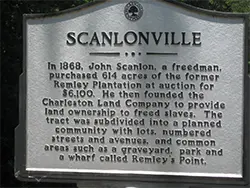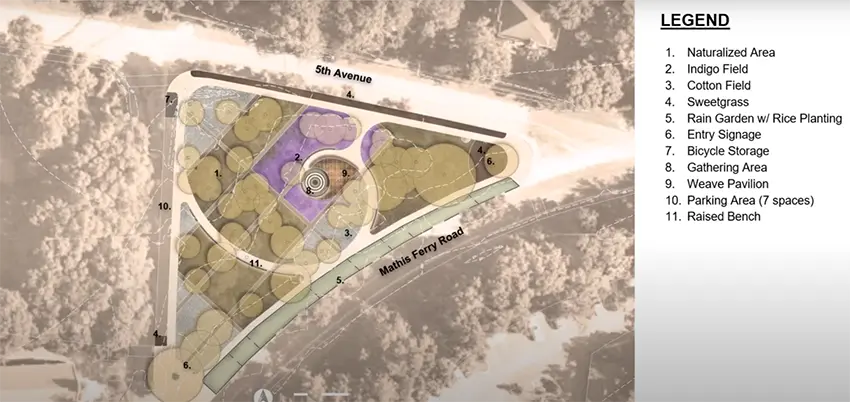
Perhaps you’ve noticed the vacant lot as you’ve turned off Highway 17 onto Mathis Ferry Road, just past the first traffic circle. More likely than not, however, you haven’t paid it much attention. But that’s about to change.
 The empty lot on the corner of 5th Avenue will soon become the site of a new park — but not just any park. This one will serve as a heritage memorial site, honoring the founders of the Scanlonville community.
The empty lot on the corner of 5th Avenue will soon become the site of a new park — but not just any park. This one will serve as a heritage memorial site, honoring the founders of the Scanlonville community.
The area, often referred to as Remley’s Point, has been home to generations of African Americans. Its first residents settled there after the Civil War when freedman John Scanlon purchased 614 acres of the Remley Plantation. He divided most of it into residential lots and sold them to other formerly enslaved people. Today, less than 10% of Scanlonville belongs to descendants of the original residents. That half-acre lot on Mathis Ferry is part of that percentage.
Jackie Gore, a lifelong Scanlonville resident and treasurer of the nonprofit East Cooper Civic Club said, “We have worked for years with the town to ensure that preservation efforts in the Scanlonville community are addressed.”

The result is the planned parklet which will be known as Scanlonville Praise House Park.
James Aton, the Town of Mount Pleasant’s deputy director, Capital Projects & Transportation and project manager for the plan, explained, “The Scanlonville residents are an asset to the community. We wanted to create space for the public to enjoy, so using funds from the budget for Mount Pleasant Way, the town stepped in to help with infrastructure.”
A walk-and-bike trail along Mathis Ferry Road will connect the Scanlonville Praise House Park to an existing path along Wingo Way that runs to the park.
“We wanted to ensure that this park blends into the surroundings but also reflects our heritage,” Gore stated, adding that “a competition for the park’s design was held among landscape architecture students at North Carolina A&T State University, a historically black, land-grant research university in Greensboro. The name Praise House Park was also coined by the students to reflect the importance of the praise house in African American settlement communities.”
A praise house was a simple wooden building used for worship and other gatherings. It was the center of the community. This park is meant to also be a gathering place for spiritual reflection and community awareness.
The students were tasked with the challenge of creating a unique experience and making a small park stand out in a town with many parks. Three considerations were deemed most important: a celebration of the battles and triumphs of the community’s founders, recognition of the region’s cultural history and development of a deeper shared understanding of Scanlonville. A panel of town officials, professional landscape engineers and Scanlonville residents chose the winning design from the students’ submissions.
The work will be done in phases beginning in August with the construction of sidewalks. Plantings of sweetgrass and indigo will be woven into the natural landscape of live oaks. Statues of a Gullah woman as well as a Sewee Indian, representing the earliest inhabitants of the area, are also planned. Additionally, in the future, visitors will be able to use their cell phones and other devices to listen to stories of past community residents.
“The East Cooper Civic Club has a great vision for this property,” said Liz Boyles, division chief in the town’s Office of Neighborhood Livability. “As part of the town’s Mount Pleasant Way, the non-motorized path will eventually go from one end of town to the other. Various segments of the trail will be named after what is already there. We look for opportunities to partner where we can, so the Scanlonville section will be named Praise House Trail.”
In April, Mount Pleasant Mayor Will Haynie officially announced the project, stating that “it exemplifies progress while honoring the past.” Because the land is protected in perpetuity by the Lowcountry Land Trust, there’s no chance that development can overtake or overshadow the site’s significant cultural and historical importance.
The final design was completed in April, with a projected cost of $635,000. The National Heritage Corridor awarded a $150,000 grant, with the remainder covered by public and private funding. Additions including statues and audio capabilities are dependent on donations.
By Mary Coy




Leave a Reply